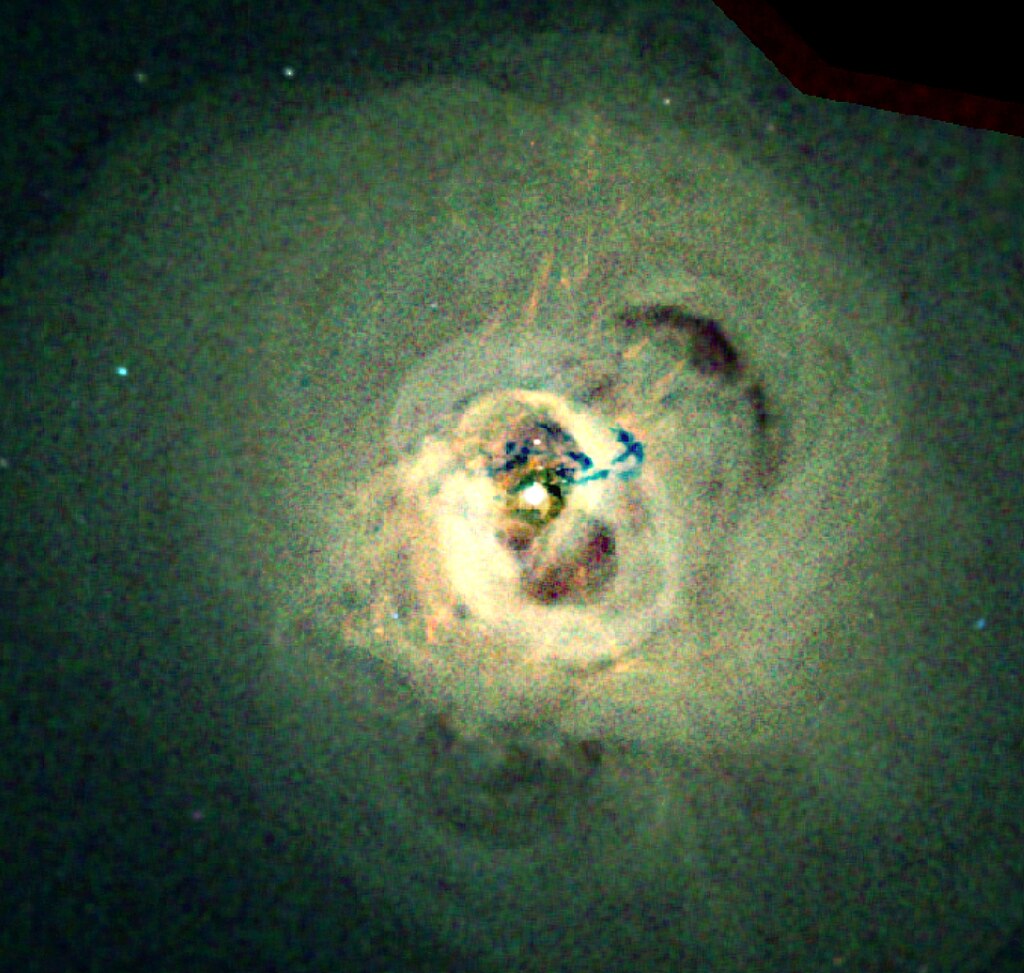Central regions Perseus galaxy cluster
Enormous bright loops, ripples, and jet-like streaks are apparent in the image. The dark blue filaments in the center are likely due to a galaxy that has been torn apart and is falling into NGC 1275, a.k.a. Perseus A, the giant galaxy that lies at the center of the cluster.
Image is 284 arcsec across. RA 03h 19m 47.60s Dec +41° 30' 37.00" in Perseus. Observation dates: 13 pointings between August 8, 2002 and October 20, 2004. Color code: Energy (Red 0.3-1.2 keV, Green 1.2-2 keV, Blue 2-7 keV). Instrument: ACIS.Relevante Bilder
Relevante Artikel
PerseushaufenDer Perseushaufen (Abell 426) ist ein Galaxienhaufen im Sternbild Perseus. Er ist etwa 240 Millionen Lichtjahre entfernt. Seine mittlere Radialgeschwindigkeit beträgt rund 5400 Kilometer pro Sekunde. Er ist einer der nächsten reichen Galaxienhaufen und umfasst etwa 500 bis 1000 Galaxien, die sich am Himmel über ein Gebiet mit einem Durchmesser von etwa 15° verteilen. Er besteht vor allem aus gelblichen elliptischen und linsenförmigen Galaxien und hat eine geschätzte Gesamtmasse von 2 · 1015 Sonnenmassen. Nach dem Schema von Rood und Sastry (RS-Schema) wird der Haufen aufgrund seiner langgestreckten Form als Typ L klassifiziert. .. weiterlesen



